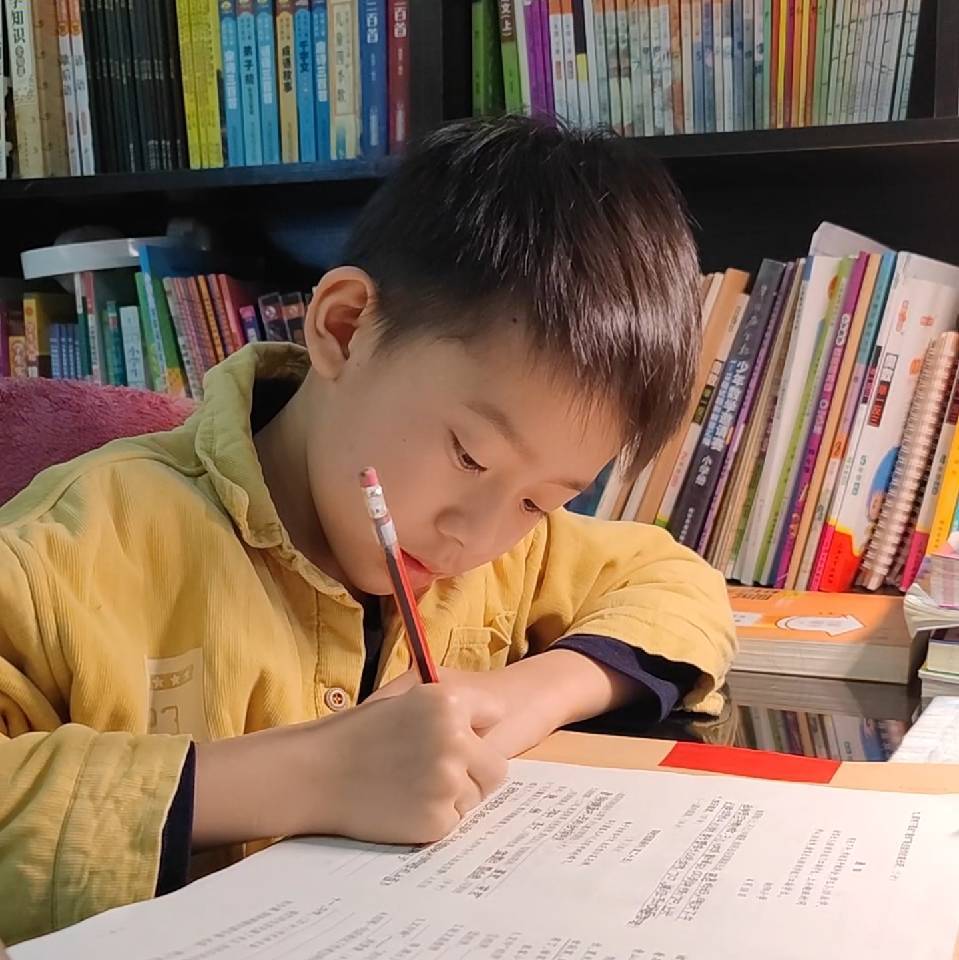积累:of
“of” 是英语中最常用的介词之一,功能广泛,核心作用是连接两个名词(或名词性成分),表示两者之间的各种逻辑关系。其用法可根据语义分为以下几大类,每类均搭配具体示例帮助理解,同时附常考短语及用法说明。
一、表示“所属关系”:A of B = “B的A”
这是 of 最基础、最常见的用法,强调前者(A)归属于后者(B),或后者(B)是前者(A)的所有者/来源。
后接具体名词(人或事物),直接体现“所属”:
the door of the room(房间的门)
the name of the girl(女孩的名字)
the leaves of the tree(树的叶子)
后接抽象名词,体现“抽象概念的归属”:
the importance of education(教育的重要性)
the meaning of life(生命的意义)
the result of the exam(考试的结果)
注意:当所有者是“人”且名词前有冠词/形容词性物主代词时,常用 “名词所有格(’s)” 替代 of(如 “the girl’s name” 比 “the name of the girl” 更自然);但当所有者是“事物、抽象概念”或名词较长时,必须用 of(如 “the cover of the book” 不能说 “the book’s cover”,“the address of the company we visited yesterday” 无法用 ’s 表达)。
二、表示“部分与整体的关系”:A of B = “B中的A”
强调前者(A)是后者(B)这个整体中的一部分,常见于“数量+of+复数/不可数名词”结构,或“特定范围中的某部分”。
数量短语+of:表示“整体中的具体数量”
a cup of tea(一杯茶,“一杯”是“茶”这个整体中的一部分)
three pieces of paper(三张纸,“三张”是“纸”整体中的部分)
some of the students(一些学生,“一些”是“学生群体”中的部分)
most of the water(大部分水,“大部分”是“水”整体中的部分)
特定范围中的部分:
the best of the team(团队里最优秀的人,“最优秀的”是“团队”中的部分)
a member of the club(俱乐部的一员,“一员”是“俱乐部成员”整体中的部分)
the top of the mountain(山顶,“顶部”是“山”这个整体的一部分)
三、表示“描述与属性”:A of B = “具有B属性的A”
用后者(B)描述前者(A)的性质、特征、类别、材质等,相当于“形容词+名词”的替代结构(如 “a man of courage = a courageous man”)。
描述“性质/特征”:
a man of wisdom(有智慧的人,“智慧”是“人”的属性)
a city of lights(不夜城,“灯光”是“城市”的特征)
a book of interest(有趣的书,“有趣”是“书”的属性)
描述“类别/身份”:
a student of English(英语专业的学生,“英语”是“学生”的类别)
a doctor of medicine(医学博士,“医学”是“博士”的专业类别)
描述“材质”:
a table of wood(木桌,“木头”是“桌子”的材质)
a ring of gold(金戒指,“金子”是“戒指”的材质)
四、表示“动作的对象或主体”:连接动作相关的名词与对象/执行者
当 of 前是“动作名词”(由动词变来的名词,如 action, love, help 等)时,of 后可接“动作的对象”(相当于动词的宾语)或“动作的主体”(相当于动词的主语)。
表示“动作的对象”(A of B = “对B的A”):
the love of parents(对父母的爱,“love”是动作名词,“父母”是“爱”的对象,相当于 “love parents”)
the protection of children(对儿童的保护,“protection”是动作名词,“儿童”是“保护”的对象,相当于 “protect children”)
the study of history(对历史的研究,“study”是动作名词,“历史”是“研究”的对象,相当于 “study history”)
表示“动作的主体”(A of B = “B的A”,B是动作的执行者):
the arrival of the train(火车的到达,“arrival”是动作名词,“火车”是“到达”的主体,相当于 “the train arrives”)
the cry of the baby(婴儿的哭声,“cry”是动作名词,“婴儿”是“哭”的主体,相当于 “the baby cries”)
the decision of the manager(经理的决定,“decision”是动作名词,“经理”是“做决定”的主体,相当于 “the manager decides”)
五、表示“时间、年龄、度量”:连接数量与单位/时间
用于表达时间、年龄、长度、重量、面积等度量概念,说明“具体的量或范围”。
时间:
a quarter of an hour(一刻钟,“四分之一”对应“一小时”的时间单位)
the first day of July(七月的第一天,“第一天”对应“七月”的时间范围)
of the past year(在过去的一年里,“过去的”对应“一年”的时间)
年龄:
a boy of 10(一个10岁的男孩,“10”是“男孩”的年龄)
a woman of 35(一个35岁的女人,“35”是“女人”的年龄)
度量(长度、重量、面积等):
a river of 500 kilometers(一条500公里长的河,“500公里”是“河”的长度)
a bag of 2 kilograms(一个2公斤重的袋子,“2公斤”是“袋子”的重量)
a park of 100 square meters(一个100平方米的公园,“100平方米”是“公园”的面积)
六、表示“同位关系”:A of B = “A(即B)”
前者(A)与后者(B)指同一个人或事物,B是对A的具体解释或补充说明,相当于“同位语”。
用于“身份、职位、称号”的解释:
the city of Beijing(北京市,“city”与“Beijing”指同一个地方,“Beijing”解释“city”的具体所指)
the poet of Li Bai(诗人李白,“poet”与“Li Bai”指同一个人,“Li Bai”解释“poet”的具体身份)
the year of 2023(2023年,“year”与“2023”指同一个时间,“2023”解释“year”的具体年份)
七、of 的常用固定短语
除了上述基础用法,of 还常出现在固定搭配中,这些短语的含义需整体记忆,不可拆分理解:
1. because of:因为(后接名词/名词性短语,不能接句子)
He didn’t go to school because of illness.(他因为生病没上学。)
2. instead of:代替;而不是(后接名词、代词或动名词)
She drank tea instead of coffee.(她喝了茶,没喝咖啡。)
I walked to work instead of taking a bus.(我走路去上班,没坐公交。)
3. think of:想到;认为(“think of sth” 表示“想到某物”,“think of sb/sth as...” 表示“把...看作...”)
I often think of my hometown.(我经常想到我的家乡。)
We think of him as a hero.(我们把他看作英雄。)
4. be afraid of:害怕(后接名词、代词或动名词)
She is afraid of dogs.(她害怕狗。)
He is afraid of speaking in public.(他害怕在公众面前说话。)
5. be proud of:为...骄傲(后接名词或代词,主语通常是人)
Parents are always proud of their children.(父母总是为孩子骄傲。)
I am proud of my country.(我为我的国家骄傲。)
6. take care of:照顾;处理(“take care of sb” 表示“照顾某人”,“take care of sth” 表示“处理某事”)
Can you take care of my cat while I’m away?(我不在时你能照顾我的猫吗?)
He took care of the problem quickly.(他很快处理了这个问题。)
7. run out of:用完;耗尽(主语通常是人,后接“被用完的事物”)
We have run out of water.(我们的水用完了。)
She ran out of money last week.(她上周把钱花光了。)
8. be made of:由...制成(能看出原材料,如“木桌由木头制成”可看出原材料)
The desk is made of wood.(这张桌子是木头做的。)
(对比:be made from 也表示“由...制成”,但看不出原材料,如 “Paper is made from wood.” 纸由木头制成,看不出原材料)
9. in front of:在...前面(指“在某物外部的前面”,如“房子前面有一棵树”)
There is a tree in front of the house.(房子前面有一棵树。)
(对比:in the front of 表示“在某物内部的前面”,如 “He sits in the front of the car.” 他坐在汽车前排。)
10. a lot of / lots of:许多(后接可数名词复数或不可数名词,用于口语和书面语,语气较随意)
I have a lot of friends.(我有很多朋友。)
There is lots of rain in summer.(夏天雨水很多。)
英语基础
- 陈一男基础英语研究
- 2023年广东中考英语试题
- 2024年广东中考英语试题
- 2025年广东中考英语试题(待续)
- 学习英语最有效的方法与学习路径
- 词法:名代形副动,数介连叹助
- 词法:名词
- 词法:代词
- 词法:冠词:a、an、the、零冠词
- 词法:形容词
- 词法:副词
- 词法:数词:基数、序数
- 词法:量词
- 词法:感叹词:What! Yes!
- 词法:连词: F、A、N、B、O、Y、S
- 词法:介词:位、时、方、手段、原因、目的
- 词法:易混淆介词:时间、地点、方式、关系
- 词法:动词
- 句法:非谓语动词:不定式、动名词、分词
- 短语:名短、动短、形短、副短、介短
- 构词法:英语中创造新单词的规则和方法
- 前缀 + 词根:仅改词义,不改词性
- 词根 + 后缀:改变词性,可微调词义
- 合成法:A+B
- 转化法:单词不改变形式,直接变词性
- 缩略法:缩短原词构成新词
- 构词法:名词后缀
- 单词记忆:语言学习的基础
- [1]一般现在时 do/does
- [2]一般过去时 did
- [3]一般将来时 will + 动原
- [4]一般过去将来时 would + 动原
- [1]现在进行时 be(am/is/are) + 现分
- [2]过去进行时 was/were + 现分
- [3]将来进行时 will be + 现分
- [4]过去将来进行时 would be + 现分
- [1]现在完成时 have/has + 过分
- [2]过去完成时 had + 过分
- [3]将来完成时 will have + 过分
- [4]过去将来完成时 would have + 过分
- [1]现在完成进行时 have/has been+现分
- [2]过去完成进行时 had been+现分
- [3]将来完成进行时 will have been+现分
- [4]过去将来完成进行时 would have been+现分
- 语态:主动语态、被动语态
- 句子结构:核心是“主谓关系”
- 句法:存在句 There be 句型
- 句法:拥有句 have/has 句型
- [1]主语:句子所叙述的主体
- [2]谓语:陈述主语的动作、状态或特征
- [3]宾语:动作的目标 或 关联的对象
- [4]定语:回答关于中心词的疑问
- [5]状语:回答关于句子成分的疑问
- [6]补语:对主语或宾语进行补充定性
- [7]表语:必须搭配系动词
- [8]同位语:给本位语贴标签、做注释
- 主谓一致:主语和谓语在人称和数保持一致
- 句子的分类:按结构分类、按功能分类
- 直接引语 和 间接引语
- [1]句法:名词性从句:主语从句
- [2]句法:名词性从句:宾语从句
- [3]句法:名词性从句:表语从句
- [4]句法:名词性从句:同位语从句
- 句法:定语从句:7W + 1T
- [1]时间状语从句:when、while、as
- [2]地点状语从句:where、wherever
- [3]原因状语从句:because、since、as
- [4]条件状语从句:if、unless、as long as
- [5]目的状语从句:so that、in order that
- [6]结果状语从句:so...that、such...that
- [7]让步状语从句:although/though、while
- [8]方式状语从句:as、as if/as though
- [9]比较状语从句:as...as
- 强调句、倒装句、省略句、虚拟语气句
- 虚拟语气:表达非真实情况的语法结构
- 积累:意思相近的单词
- 积累:be
- 积累:do
- 积累:to
- 积累:no
- 积累:not
- 积累:none
- 积累:nothing
- 积累:good
- 积累:well
- 积累:also
- 积累:get
- 积累:have
- 积累:if
- 积累:whether
- 积累:but
- 积累:or
- 积累:of
- 积累:talk
- 积累:take
- 积累:with
- 积累:by
- 积累:for
- 积累:the
- 积累:than
- 积累:then
- 积累:that
- 积累:this
- 积累:as
- 积累:so
- 积累:such
- 积累:which
- 积累:while
- 积累:where
- 积累:when
- 积累:what
- 积累:how
- 积累:who
- 积累:whom
- 积累:whose
- 积累:many
- 积累:much
- 积累:too
- 积累:very
- 积累:some
- 积累:any
- 积累:few
- 积累:little
- 积累:each
- 积累:every
- 积累:other
- 积累:others
- 积累:another
- 积累:time
- 积累:day
- 积累:before 与 ago
- 积累:in
- 积累:on
- 积累:at
- 听力[A1-01]:Family(家庭)
- 听力[A1-02]:Food(食物)
- 听力[A1-03]:Weather(天气)
- 听力[A1-04]:Supermarket(超市)
- 听力[A1-05]:Transportation(交通工具)
- 听力[A1-06]:Restaurants(餐厅)
- 听力[A1-07]:Weekend plans(周末计划)
- 听力[A1-08]:Pets(宠物)
- 听力[A1-09]:Animals(动物)
- 听力[A1-10]:School life(校园生活)
- 听力[A1-11]:Favorite place(最喜欢的地方)
- 听力[A1-12]:Directions(指路)
- 听力[A1-13]:Music(音乐)
- 听力[A1-14]:Daily Technology Products(日常科技产品)
- 听力[A1-15]:Social Activities(社交活动)
- 听力[A1-16]:Daily Problems(日常问题)
- 听力[A1-17]:Celebrations(庆祝活动)
- 听力[A1-18]:Seasonal Fruits(应季水果)
- 听力[A1-19]:Meeting new people(结识新朋友)
- 听力[A1-20]:Friends(朋友)
- 听力[A1-21]:Stay Guide(住宿指南)
- 听力[A1-22]:Parks(公园)
